Grace Baptist Church celebrates 150 years
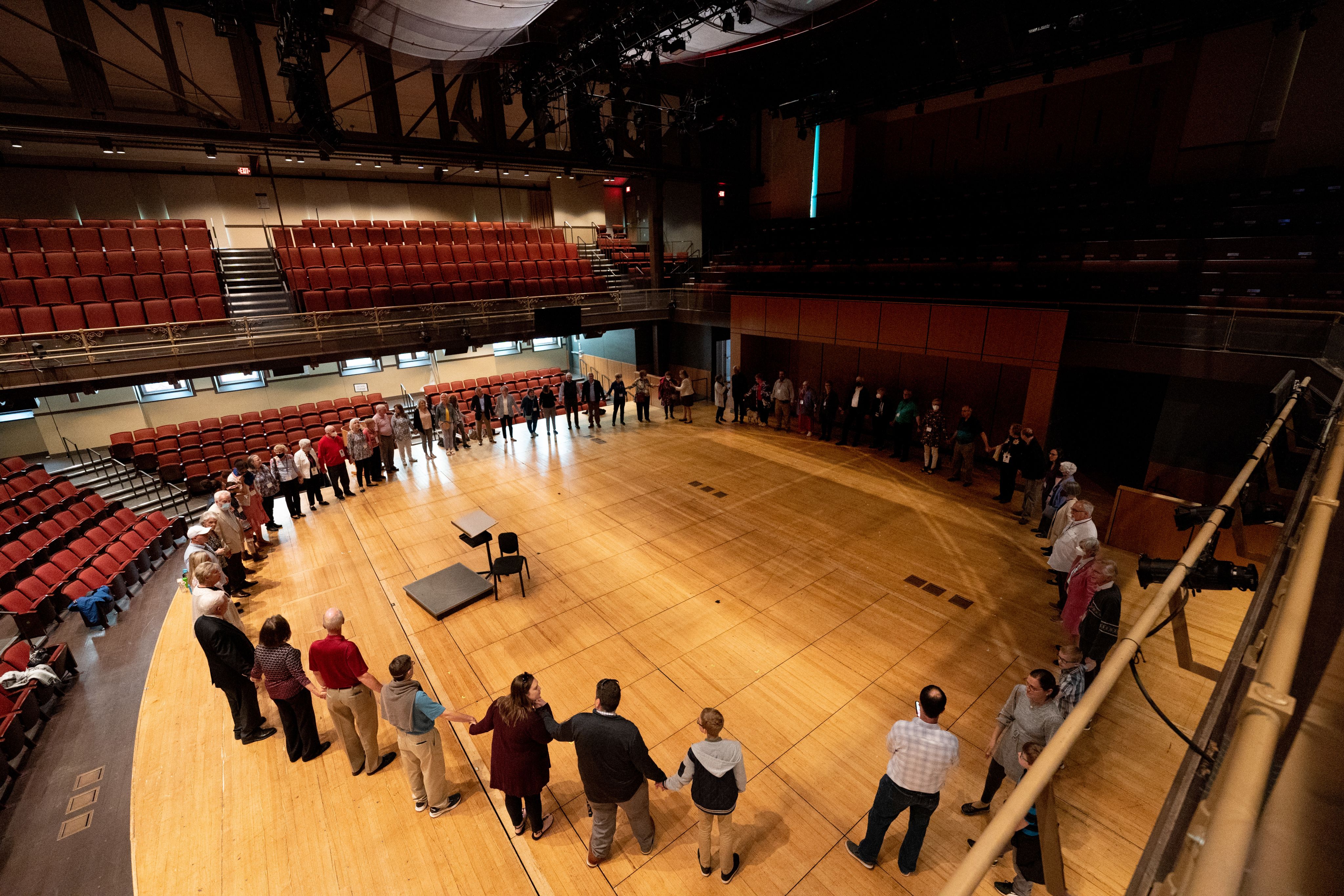
On Sunday, May 1, 60 congregation members and friends from Grace Baptist Church came together for a visit to Temple’s Main Campus to celebrate the 150th anniversary and legacy of the church that founded Temple University in 1884.
Temple University Libraries hosted the event with refreshments, a reception and self-guided tours of Charles Library.
The celebration included a tour of the Temple Performing Arts Center in order to view the original site of the church and a walk through the site of Russell Conwell's grave, which is marked by a sculpture of Conwell.
Then, at Charles Library, members of the church viewed a pop-up exhibit featuring archived documents and photographs of the church’s 150-year history in the Special Collections Research Center.
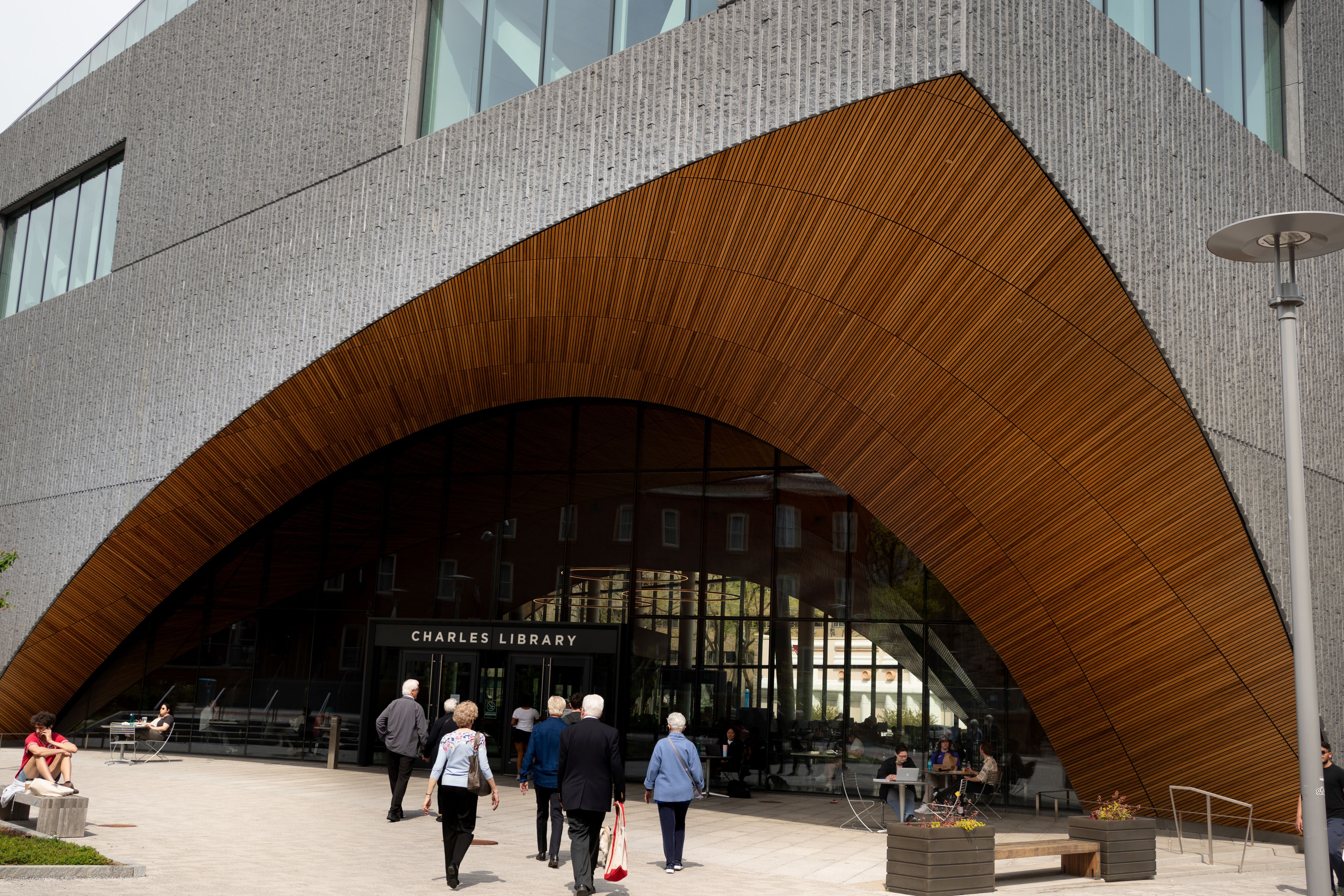
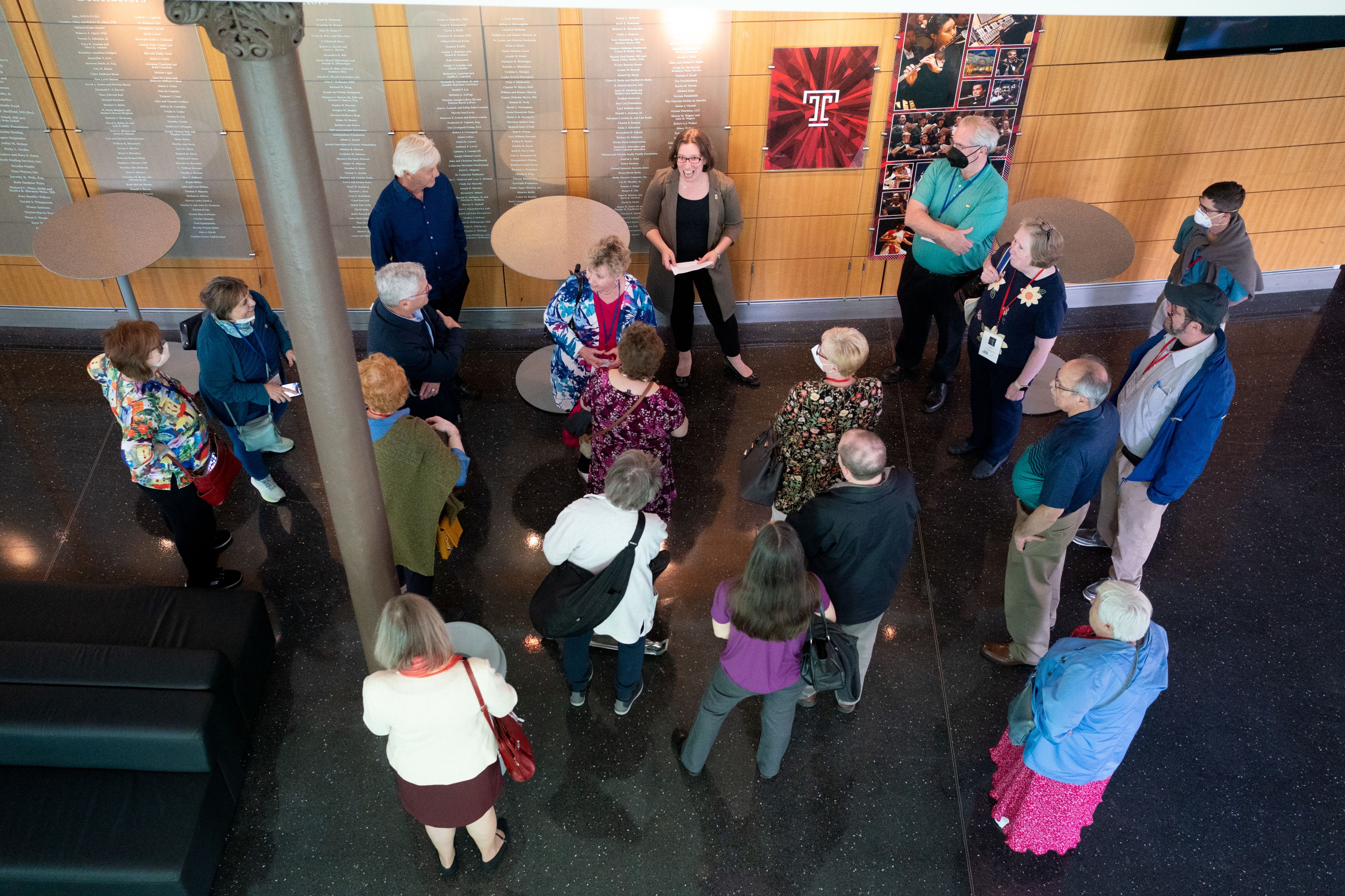
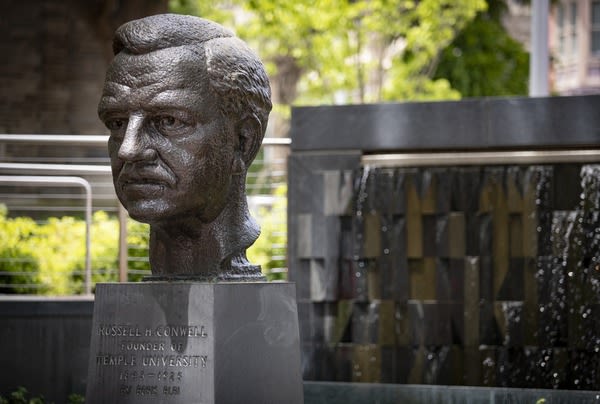
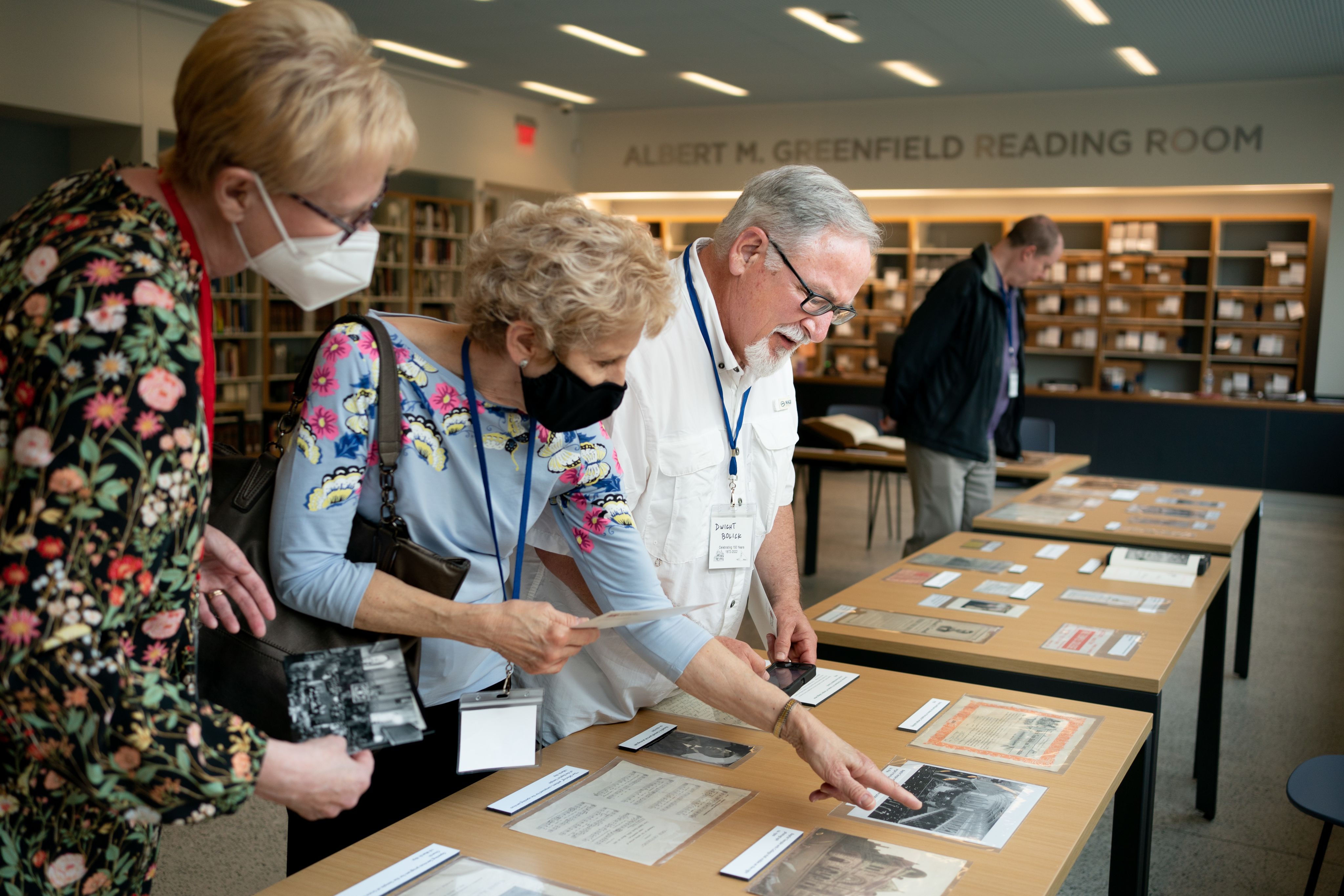
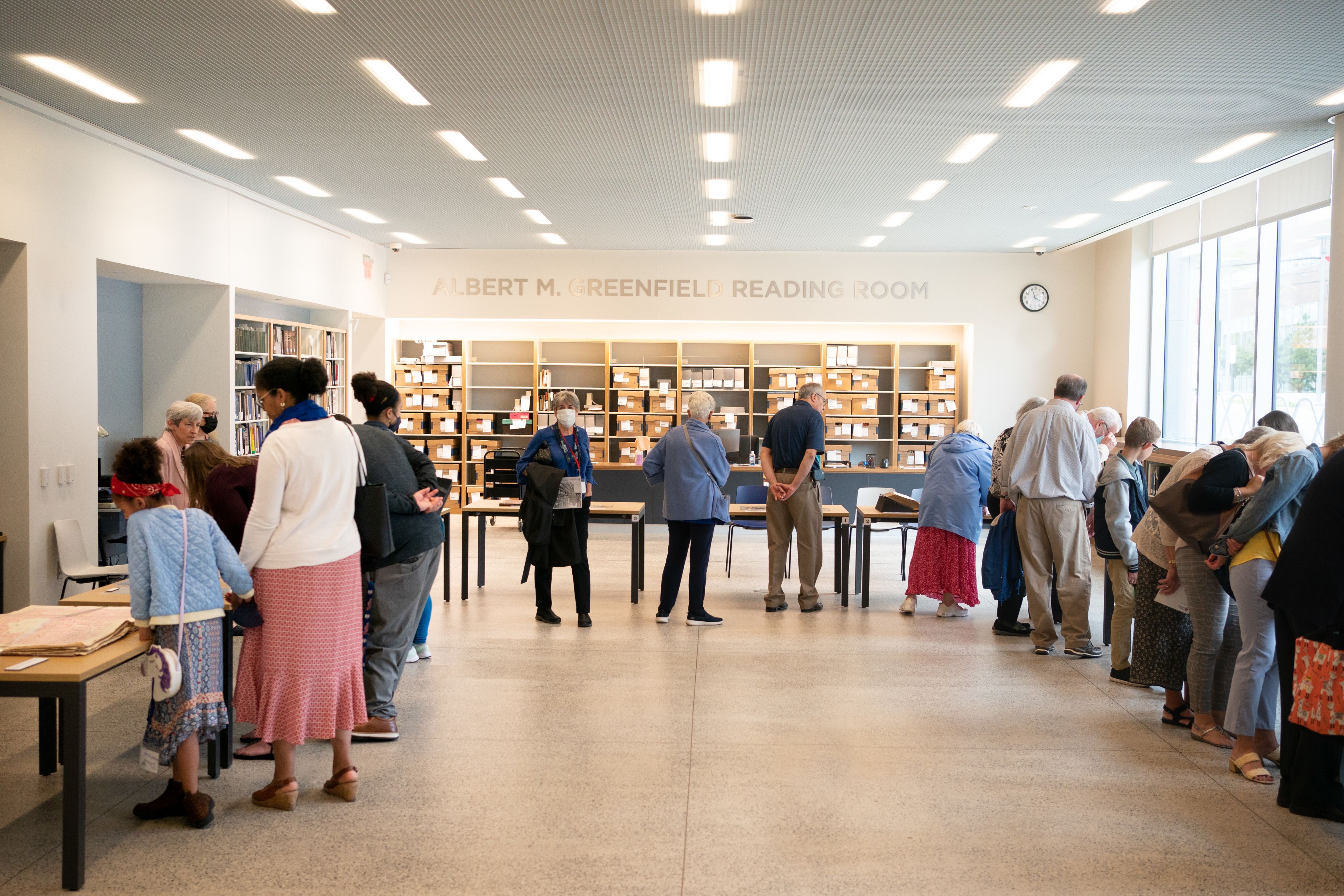
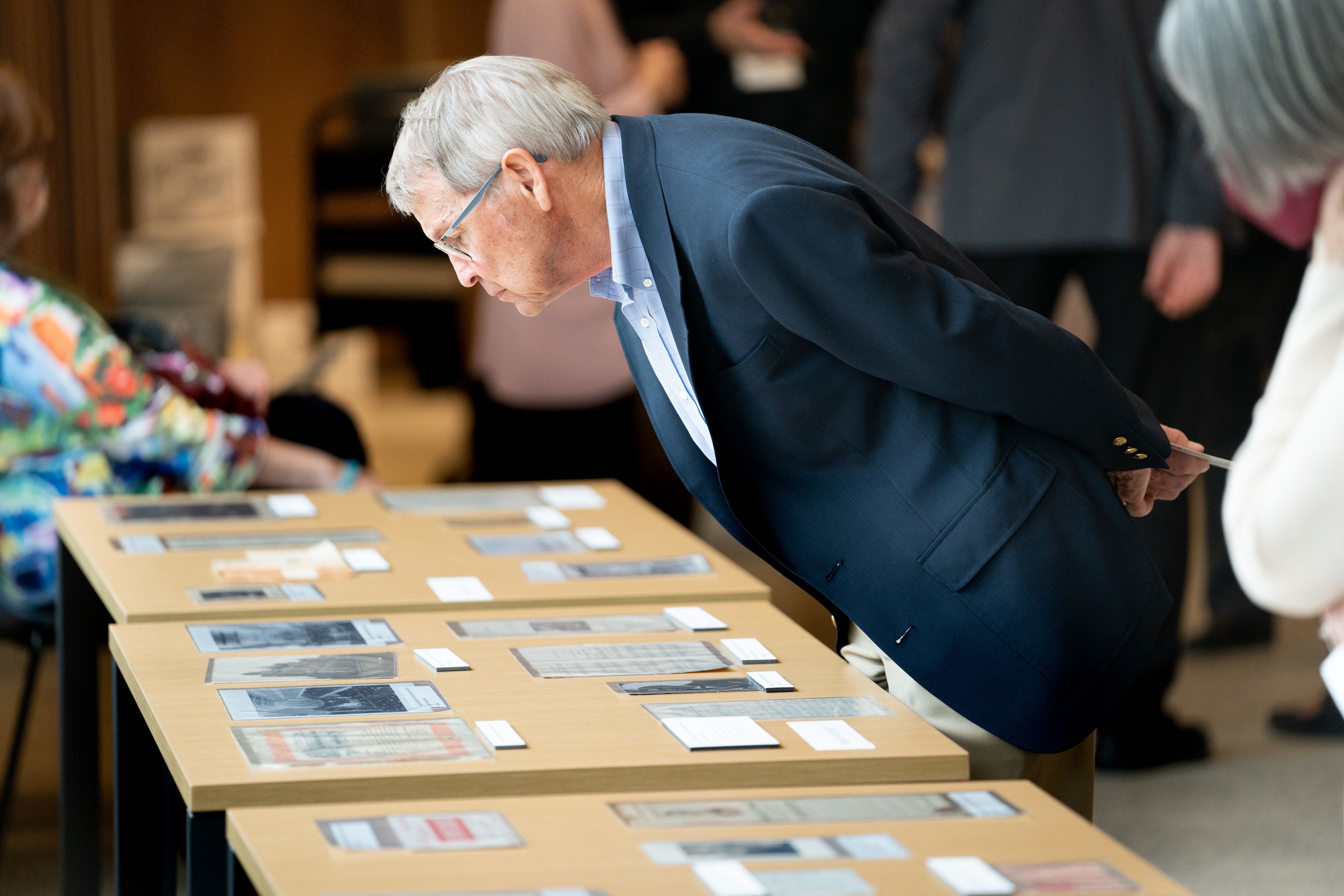
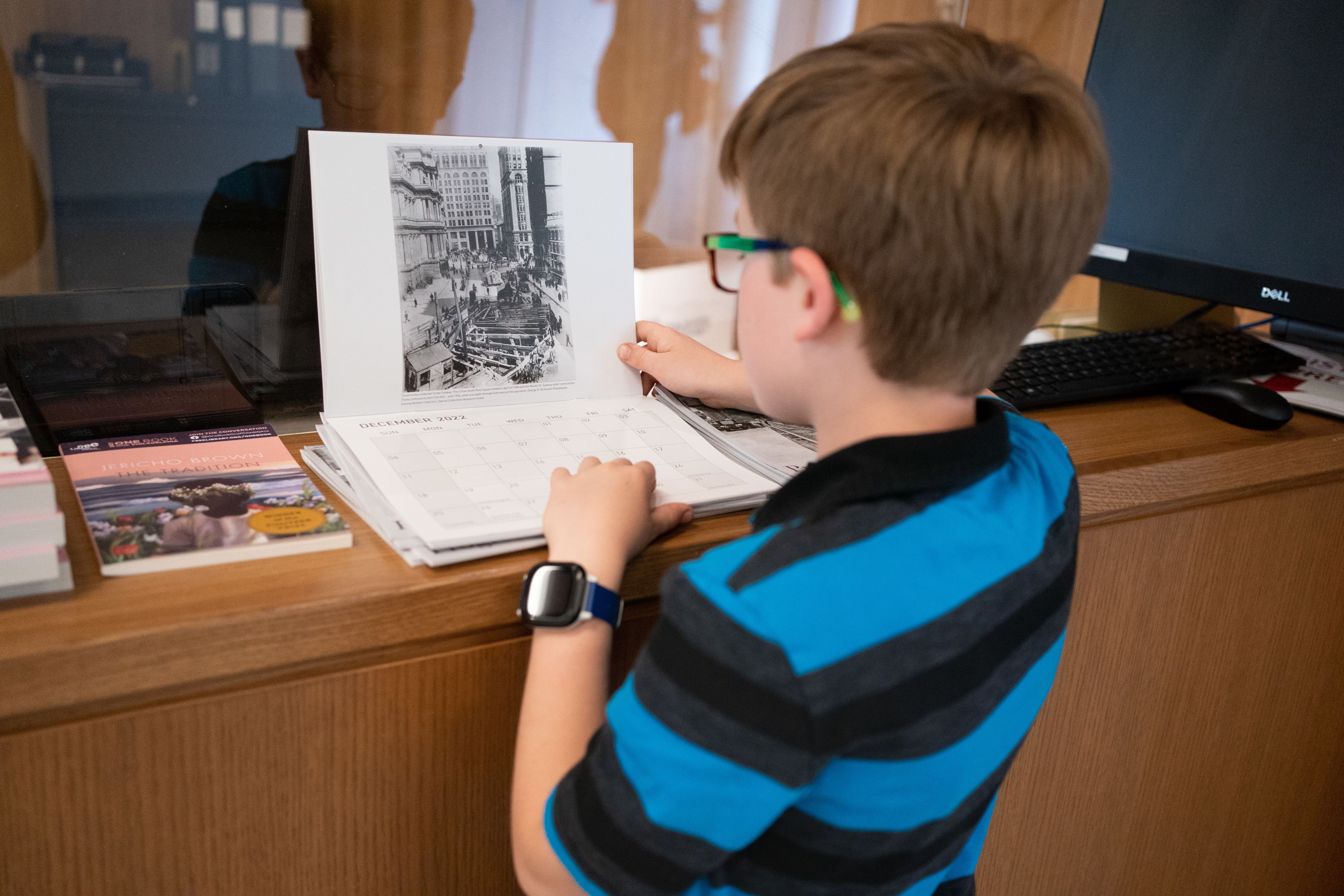
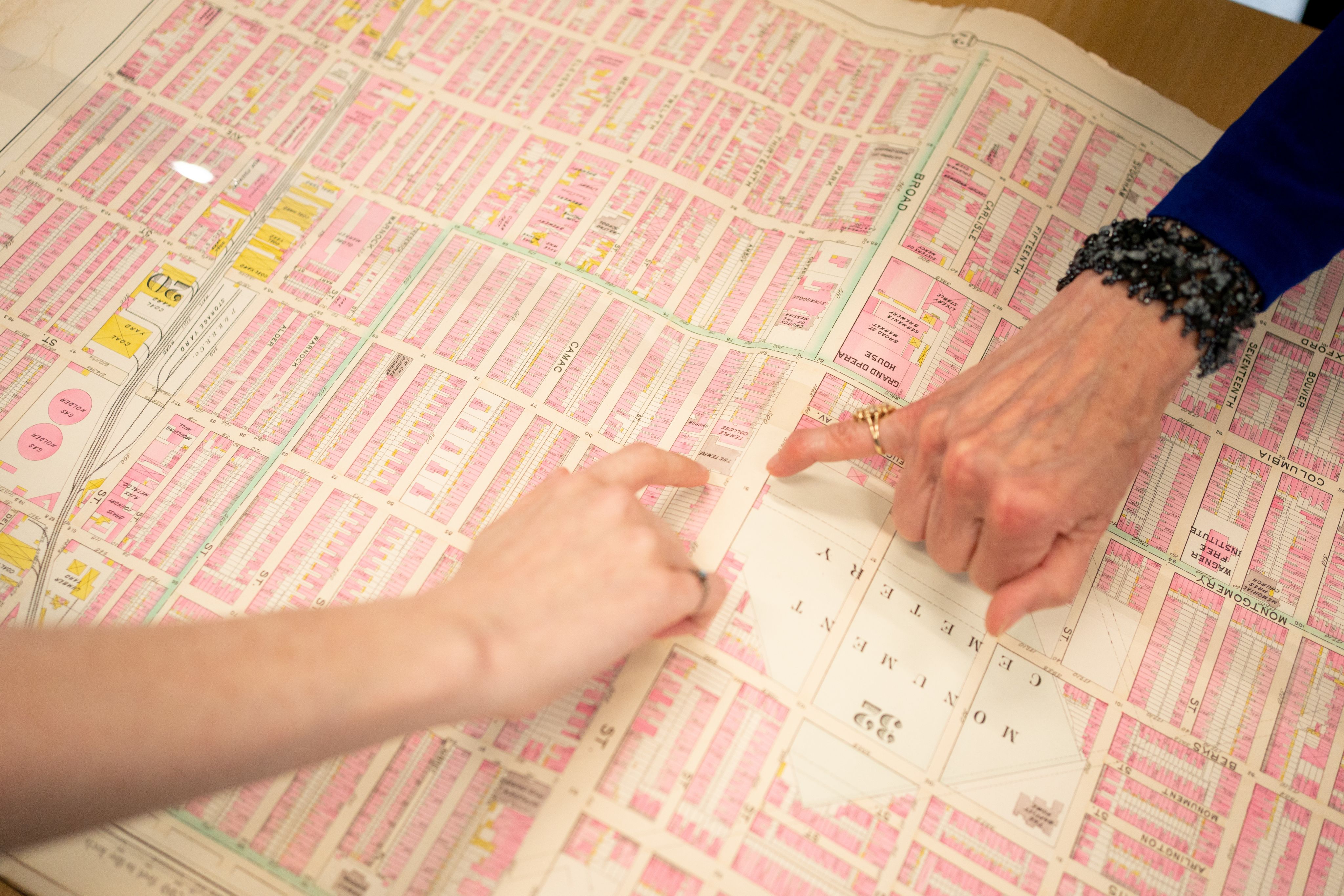
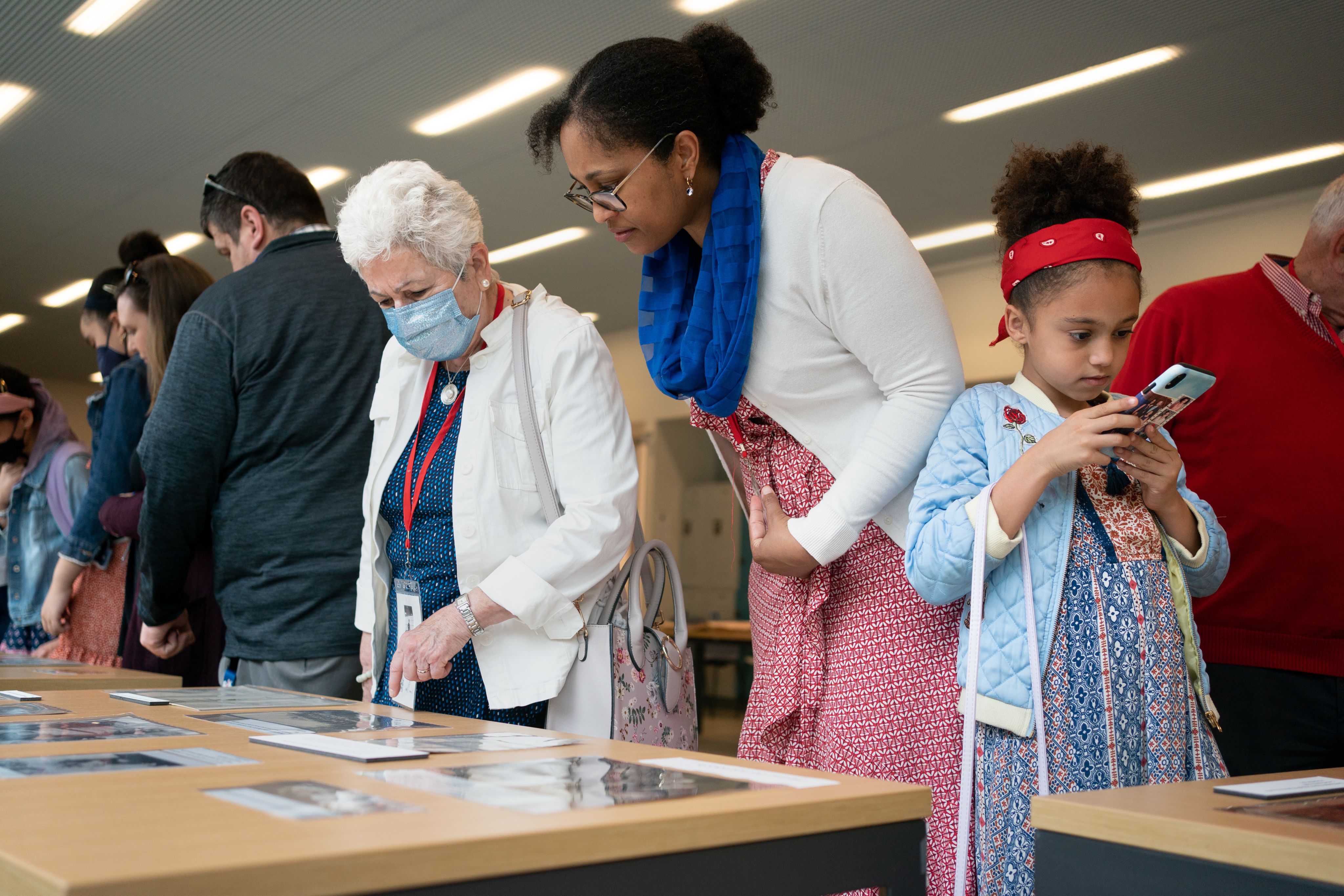
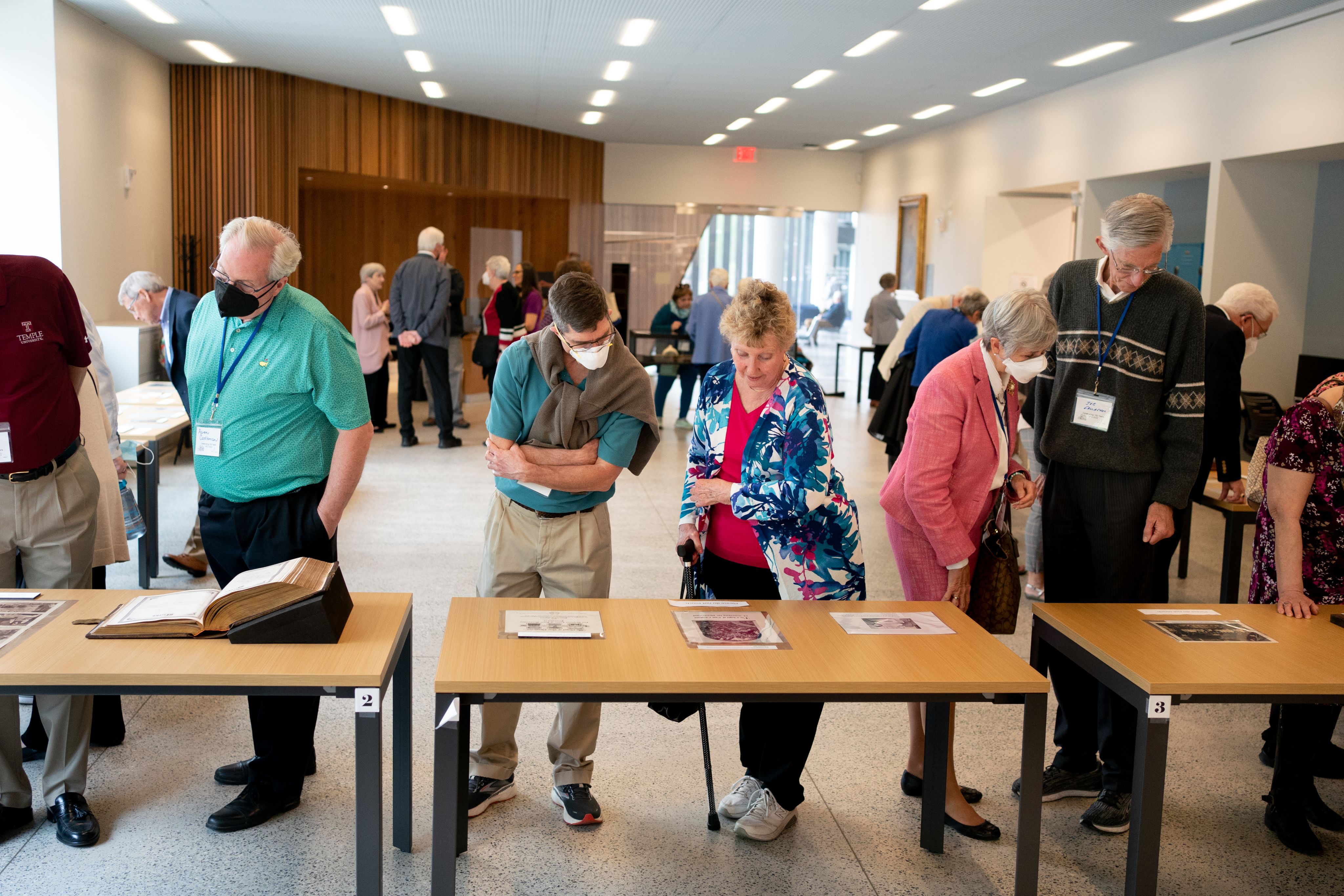
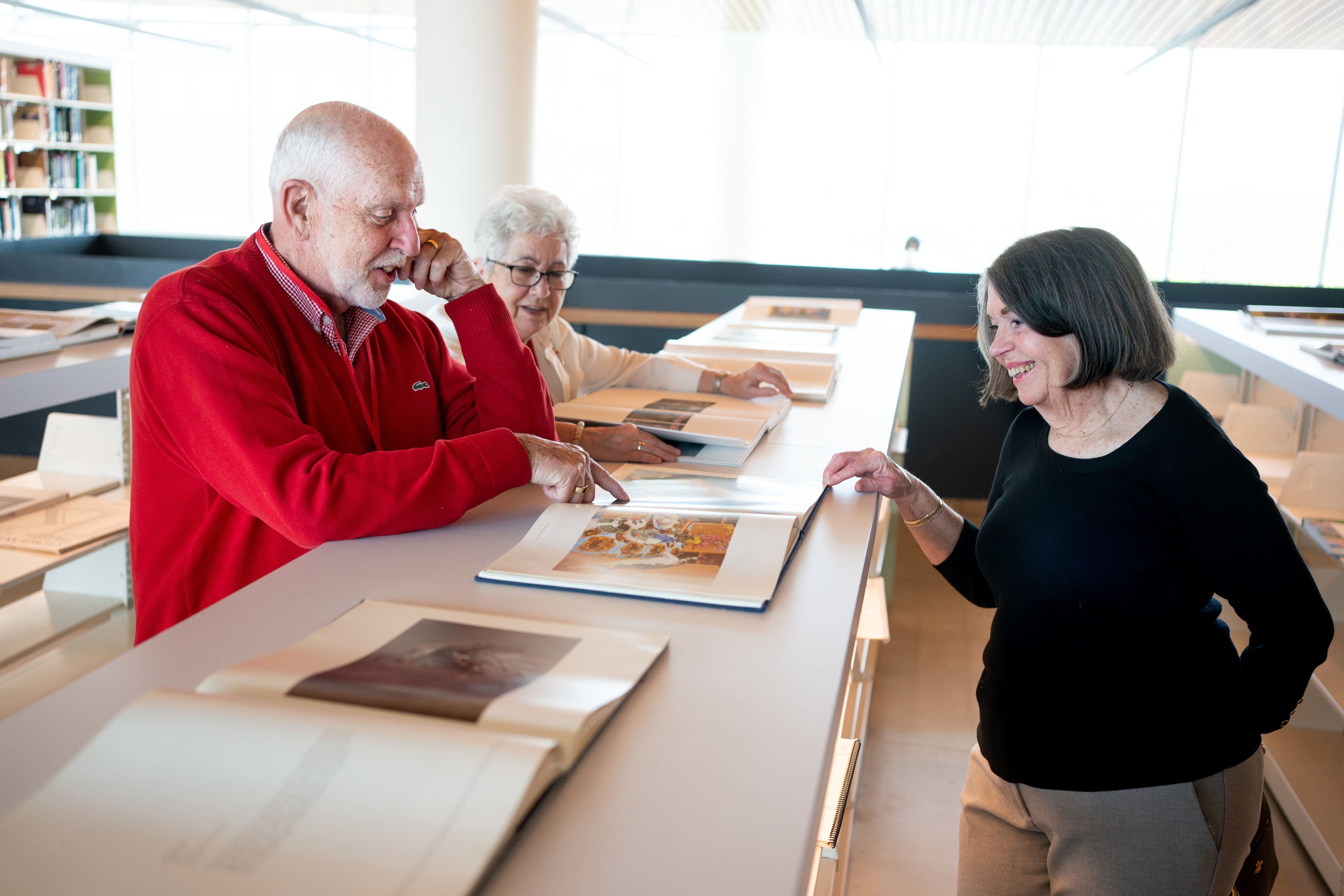
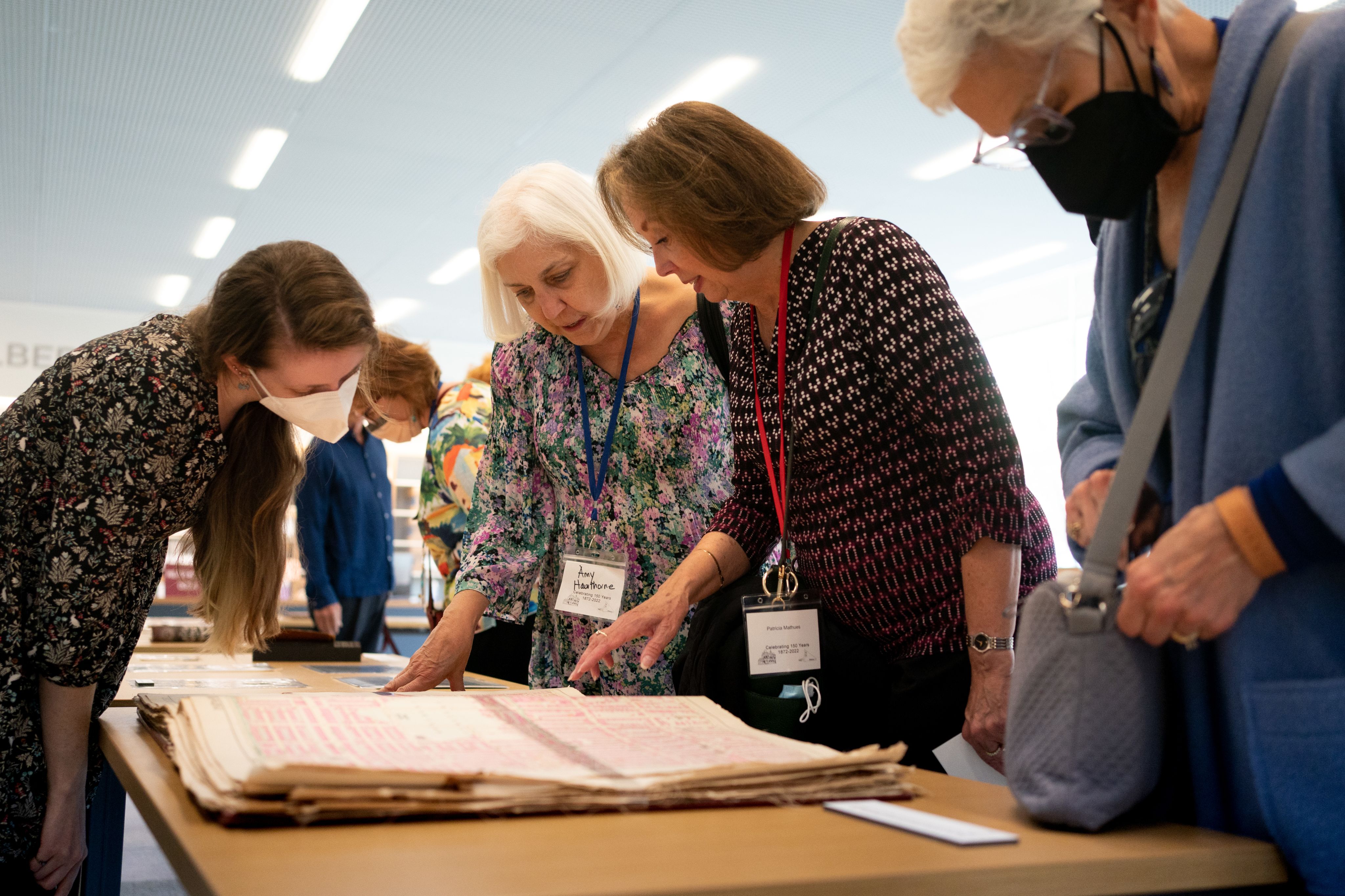
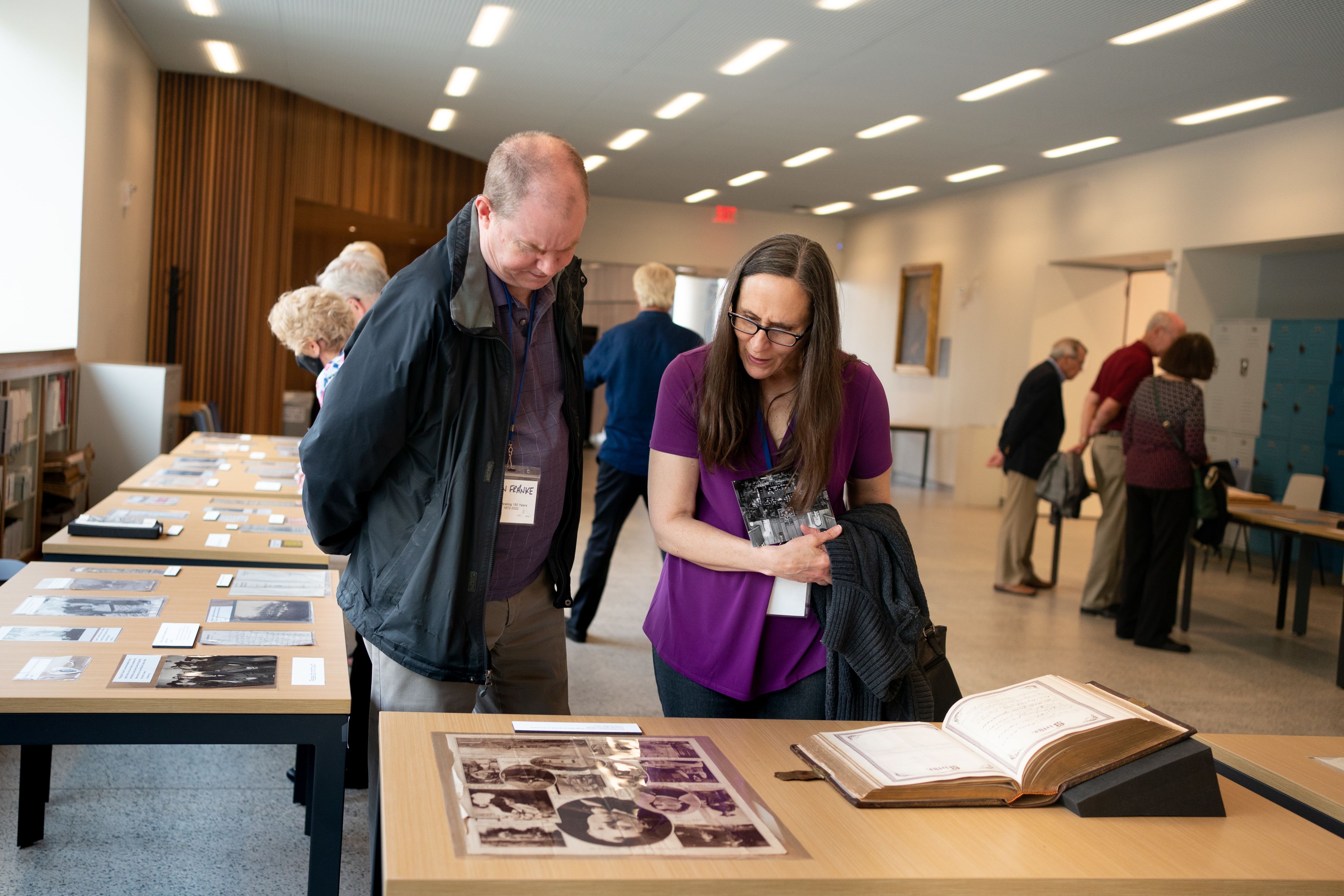
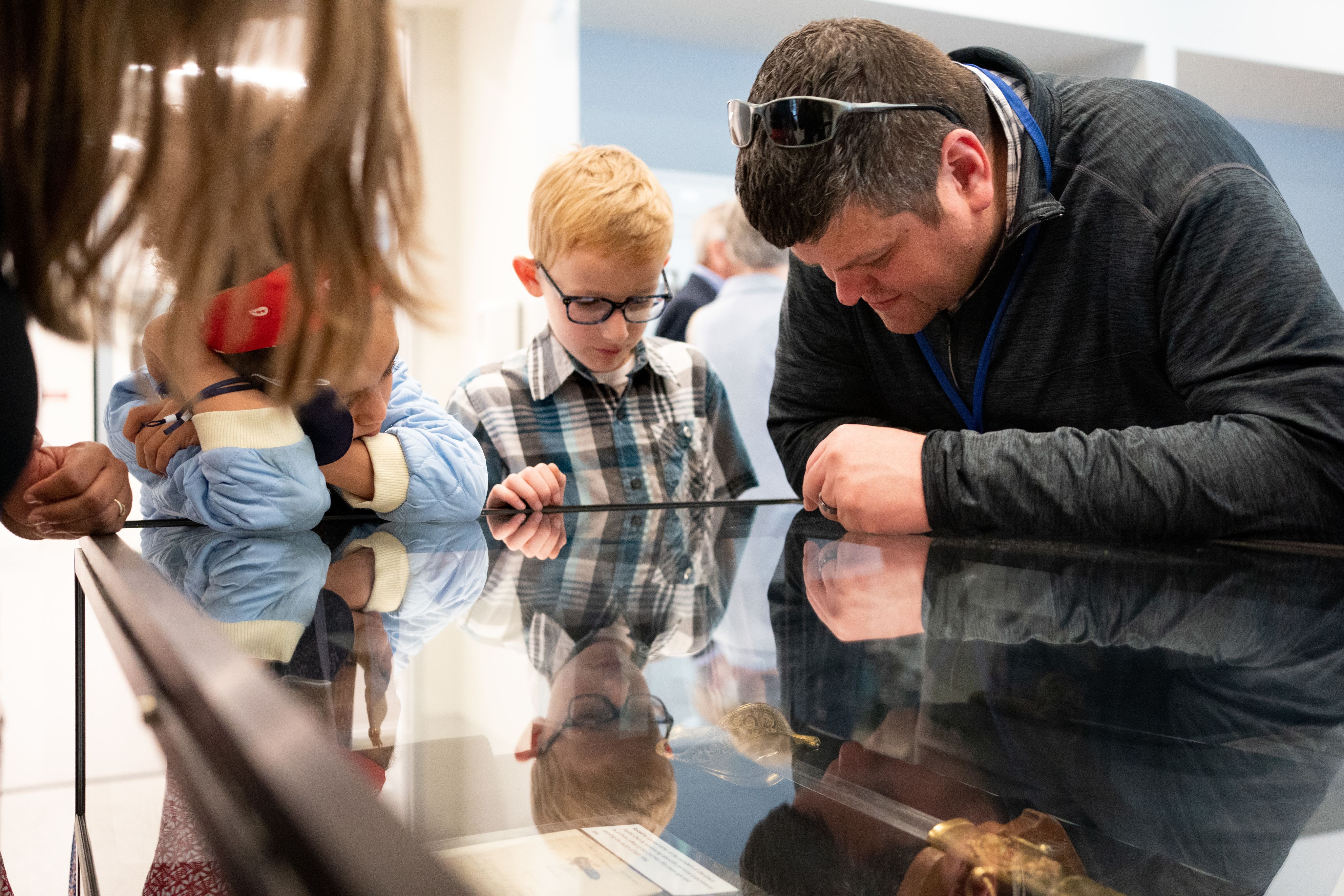










Founded in 1872, the church, which grew into the megachurch of Victorian Philadelphia, began just seven years after the end of the Civil War, with the congregation first pitching tent and later constructing a building at the corner of Berks and Marvine.
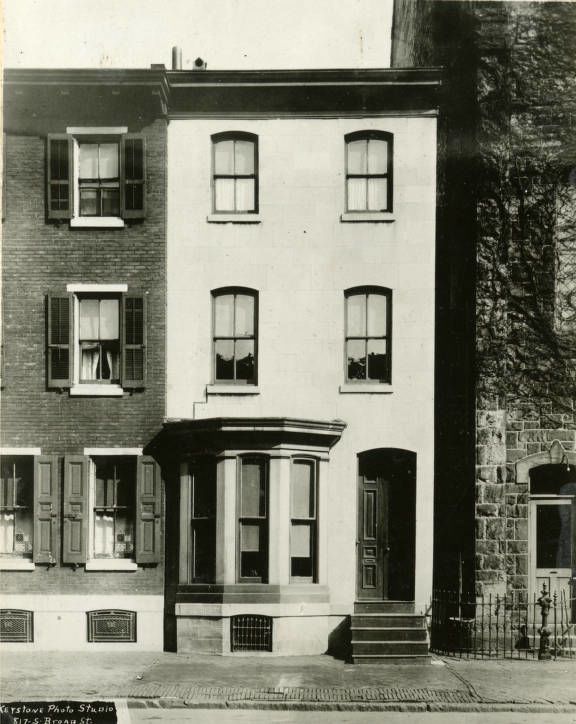
Hattie May Wiatt Sunday School Building of Grace Baptist Church, is where the earliest Temple University classes were held in 1884. The building was named after Wiatt, a little girl who lived near the church and started saving pennies after Conwell announced that someday the congregation would build a new, large church. A few months later, she became ill and passed away. After performing the funeral, Conwell was greeted by the girl’s parents who told him that Hattie May had been saving money to help build a new church. Her purse contained 57 cents. Wiatt's parents gave Conwell the purse to use as the church saw fit. Conwell then sold each of the copper coins as keepsakes and raised a thousand dollars or more. The Hattie Wiatt Society was formed and raised enough money to purchase the building starting with Wiatt’s '57 cents' gift to house the classes overflowing from the vestry rooms of Grace Baptist Church.
Hattie May Wiatt Sunday School Building of Grace Baptist Church, is where the earliest Temple University classes were held in 1884. The building was named after Wiatt, a little girl who lived near the church and started saving pennies after Conwell announced that someday the congregation would build a new, large church. A few months later, she became ill and passed away. After performing the funeral, Conwell was greeted by the girl’s parents who told him that Hattie May had been saving money to help build a new church. Her purse contained 57 cents. Wiatt's parents gave Conwell the purse to use as the church saw fit. Conwell then sold each of the copper coins as keepsakes and raised a thousand dollars or more. The Hattie Wiatt Society was formed and raised enough money to purchase the building starting with Wiatt’s '57 cents' gift to house the classes overflowing from the vestry rooms of Grace Baptist Church.
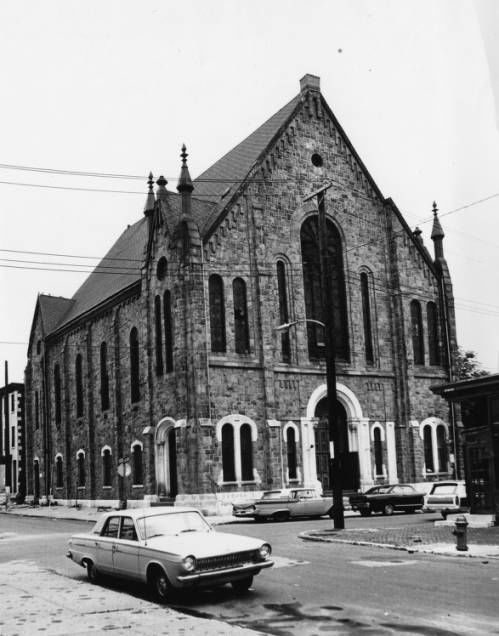
The Abyssinian Baptist Church in 1969, formerly Grace Baptist Church (before the move to Baptist Temple) is where early classes of Temple University were held.
The Abyssinian Baptist Church in 1969, formerly Grace Baptist Church (before the move to Baptist Temple) is where early classes of Temple University were held.
The church met the needs of people—minister Russell Conwell and his congregation Grace Baptist Church of Philadelphia founded Temple University in 1884 so that the working class could get an education at night and still be able to work during the day.
Patricia Mathues, EDU ’75, a member of the church for the past 35 years, said celebrating its legacy at Temple on Sunday was like a family returning to their homestead.
“Our church congregation is like a family. And the history is like family history. So we're very proud of that,” said Mathues. “And then on Sunday seeing some of the members who were with us that actually worshiped there remember what the Temple Performing Arts Center was like as a church, and they could pass that history down to those of us who did not worship there.”
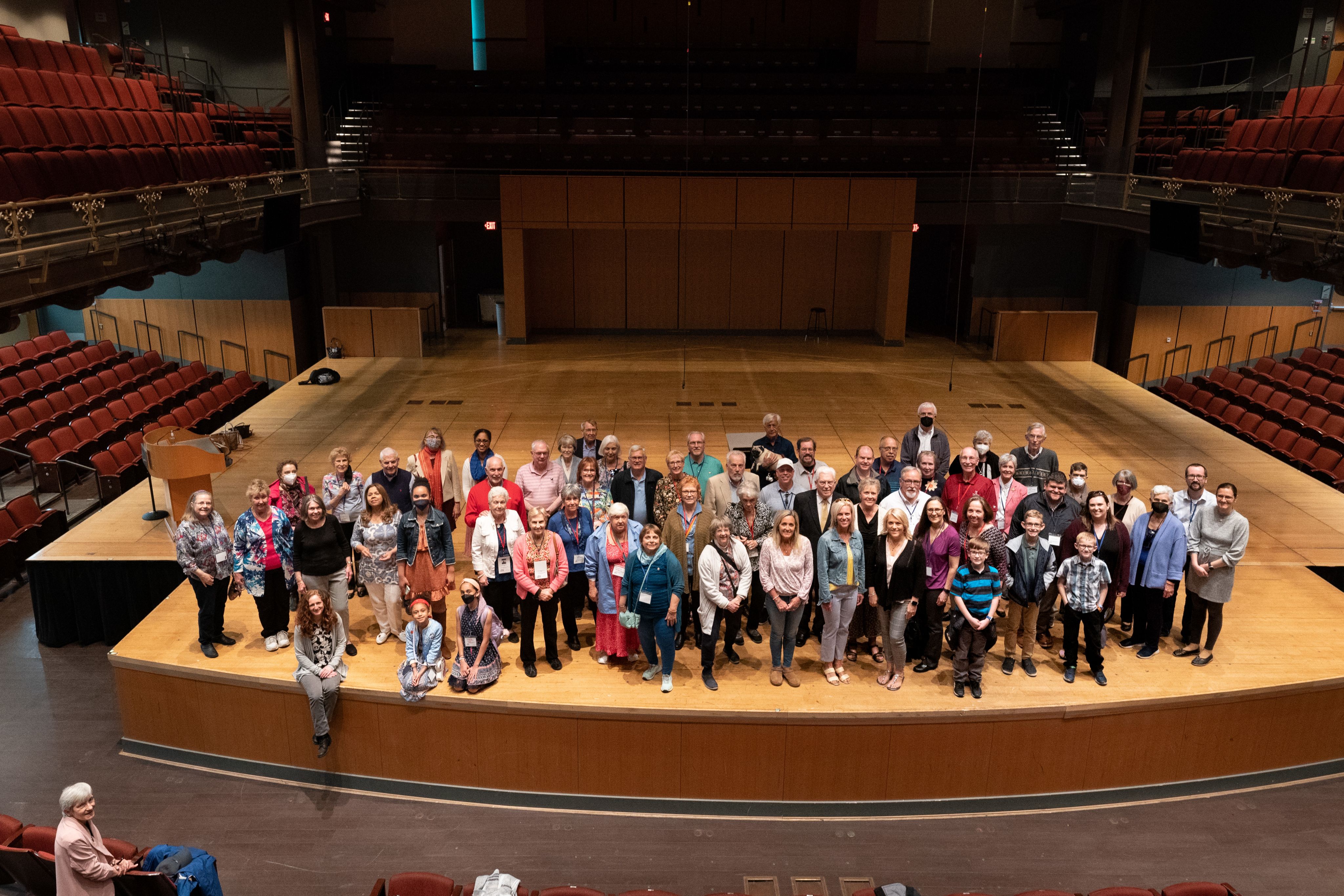
Mathues explained that Conwell was the fourth pastor of the church. He helped found Samaritan and Greatheart hospitals, which eventually became Temple University Hospital.
Conwell also established an orphanage, and he encouraged acts of selfless service by establishing a Legion of Honor Award Program to meet the needs of its community.
“The goals and mission of the original congregation under Russell Conwell with his help has become an inspiration to us,'' said Mathues. “Under our current congregation we go out into the community and do things for our neighbors and international neighbors.”
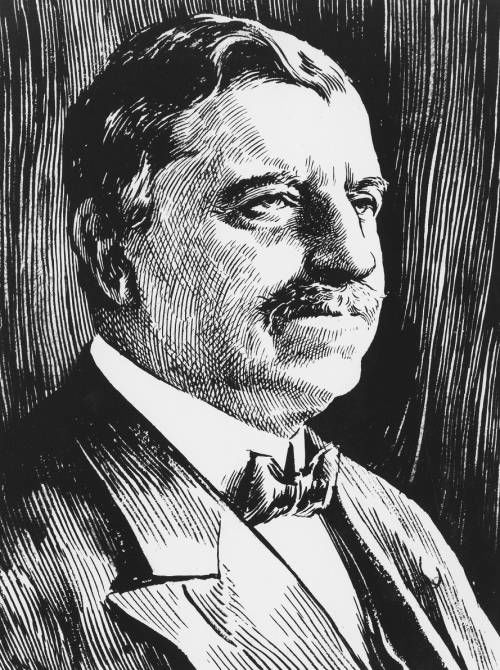
Russell H. Conwell, the founder and first president of Temple University.
Russell H. Conwell, the founder and first president of Temple University.

Founder’s Garden located on Temple University's Main Campus is the walk through site of Russell Conwell's grave, which is marked by a sculpture of Conwell. (Photo by Ryan S. Brandenberg)
Founder’s Garden located on Temple University's Main Campus is the walk through site of Russell Conwell's grave, which is marked by a sculpture of Conwell. (Photo by Ryan S. Brandenberg)
Clergymen of various denominations gathered in Grace Baptist Temple to congratulate Conwell, shown in the center, on the occasion of his 80th birthday on February 15, 1923. Among those present were the Revs. H. W. Barras, J. Francis Behrens, Norman Van Pelt, A. C. Harris and Thomas J. Cross.
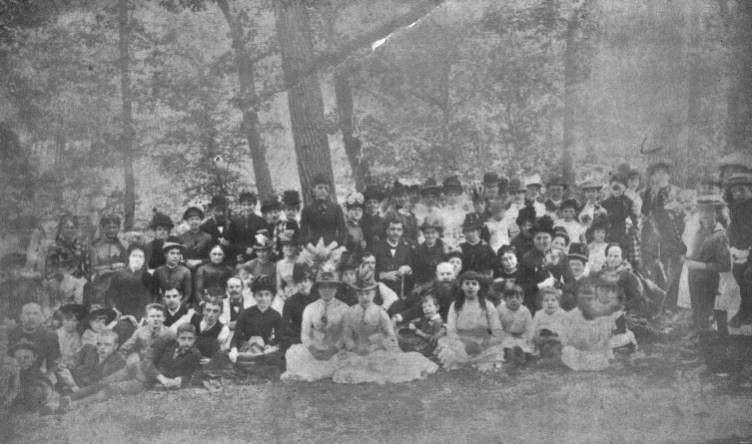
Conwell and Grace Baptist Church congregation at a picnic circa 1888.
Conwell and Grace Baptist Church congregation at a picnic circa 1888.
According to Mathues, several leaders in U.S. history once made appearances at Grace Baptist Church.
“Martin Luther King Jr. spoke from the pulpit. Helen Keller received awards in this church. And Harry S. Truman, when he was president, went to dedicate the Chapel of the Four Chaplains,” she said.
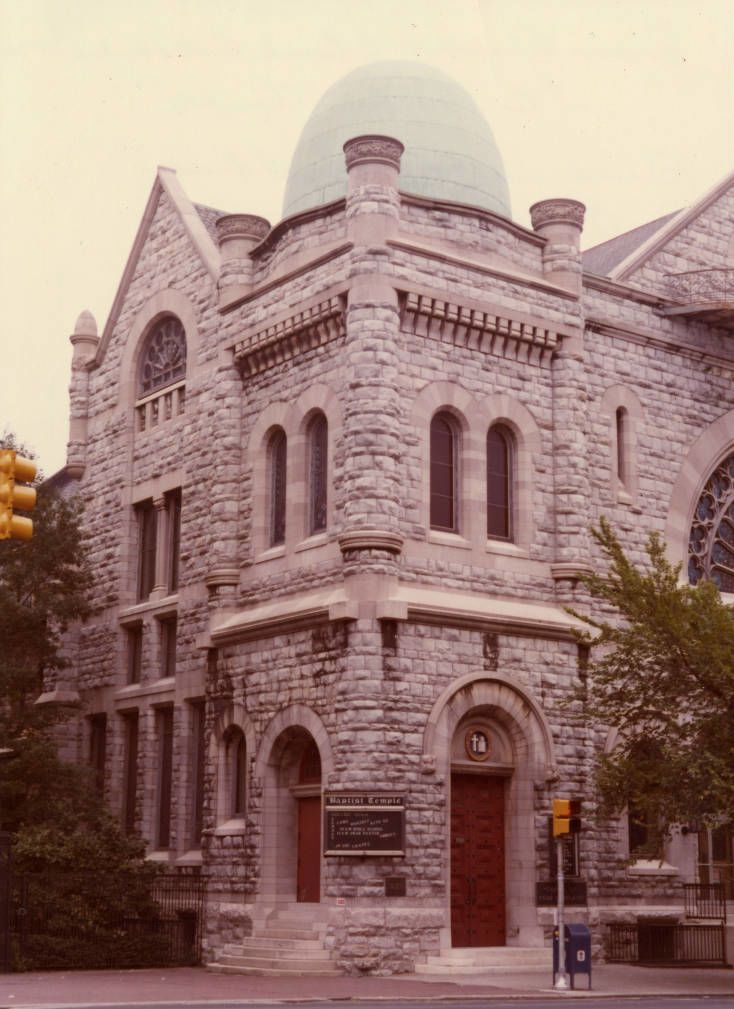
Baptist Temple, showing the entrance to the Chapel of Four Chaplains on September 9th, 1975.
Baptist Temple, showing the entrance to the Chapel of Four Chaplains on September 9th, 1975.

During the event, members of the church formed a circle on the Temple Performing Arts Center stage to sing “Blessed Be the Tie that Binds.” “It's always a fascinating place to go see a performance because it feels cozy, the acoustics are great and Temple has done a great job with turning that into a performing arts center,” Mathues explained. “To see the difference in how the church is being used builds pride. The exterior and the stained glass windows are all still intact.”
During the event, members of the church formed a circle on the Temple Performing Arts Center stage to sing “Blessed Be the Tie that Binds.” “It's always a fascinating place to go see a performance because it feels cozy, the acoustics are great and Temple has done a great job with turning that into a performing arts center,” Mathues explained. “To see the difference in how the church is being used builds pride. The exterior and the stained glass windows are all still intact.”
The interior of Baptist Temple showing stained glass windows designed for the church by Heinrich Postel in 1891.
The tile at the left commemorates the assassination of U.S. President William McKinley in September 1901.
Oil painting of Russell Conwell, the pastor of Grace Baptist Church from 1882-1925 by artist Louis Horsel Crisch in 1939.
Another church member at the event was Barbara Green, BYR ’65, ’68, who began her music ministry 61 years ago in 1961 at the age of 17 as a substitute organist when the building was still the Baptist Temple. Green said she has been a member of Grace Baptist Church since birth and was baptized there in 1954.
“I have been connected with this church all my life. And so it was really good to go back and relive a whole lot of things that happened in my life that took place there,” she said. “And in between classes at Temple, I would go into the church and practice the organ in my free time.”
Green became the music director of Grace Baptist Church in 1975, and for her 50th anniversary as its organist, the church purchased a seat in the Temple Performing Arts Center and had her name put on a plaque on seat 211, located at the right center balcony of the first row. She also received a Legion of Honor Award from the chapel in 1980 for her many years of service.
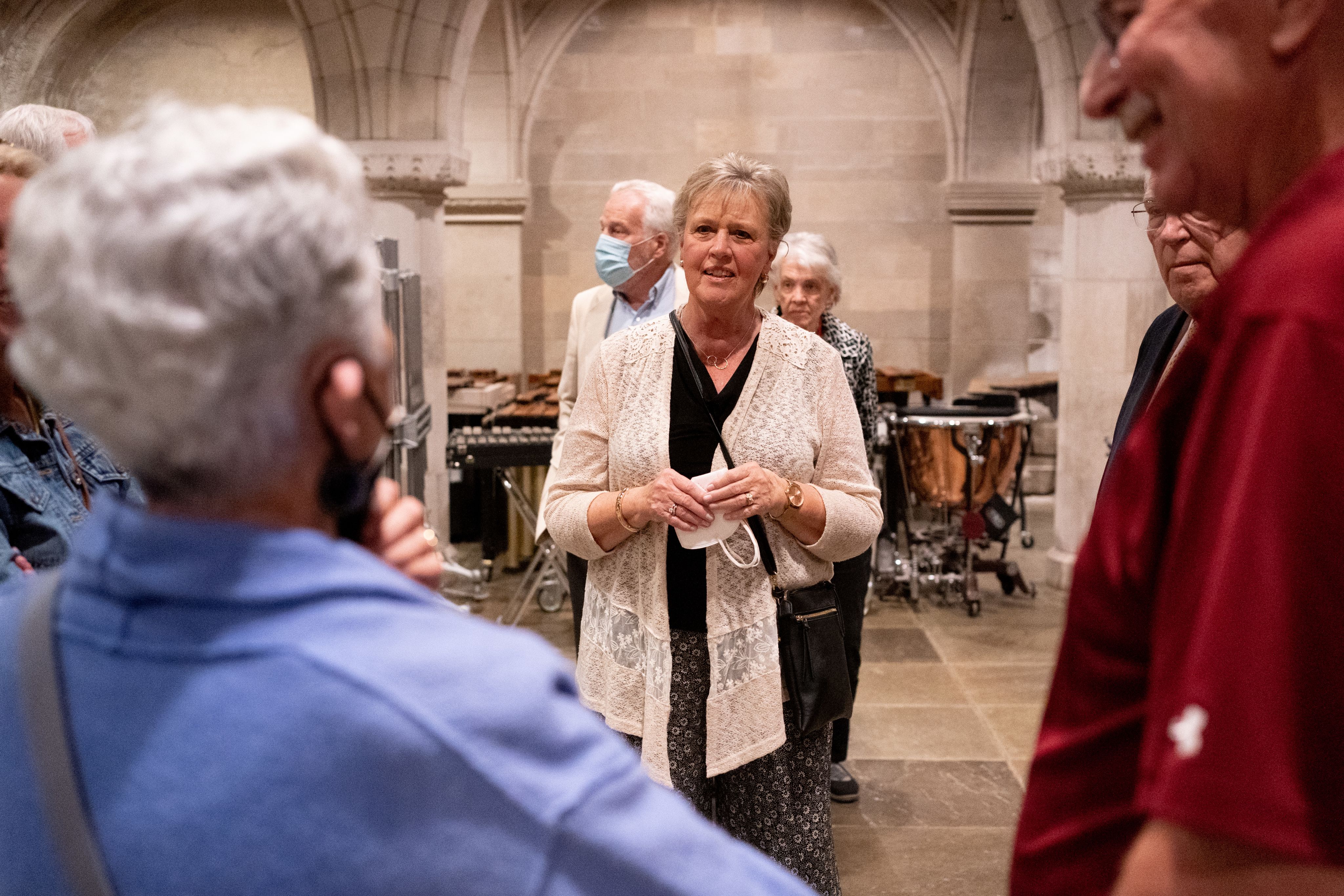
She explained the tour was an emotional experience because her two daughters were with her and it was where she married her husband. She said that her brother, who also grew up in the church, was visiting Temple from North Carolina.
And she added it was nice to reunite with several members of Grace Baptist Church that have since moved out of state but managed to travel to Temple for the church’s anniversary.
“We had people from Georgia, Texas, North Carolina and Florida that came to the church and Temple on Sunday,” she said. “Just to see everybody gathered together as old members and new members, all together singing the same song in the same place, was just an emotional experience.”
